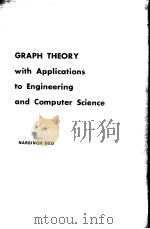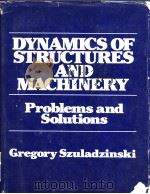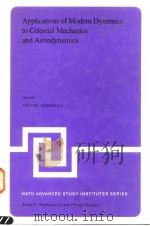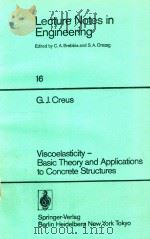《Dynamics of structures : theory and applications to earthquake engineering》
| 作者 | Anil K. Chopra 编者 |
|---|---|
| 出版 | Prentice Hall |
| 参考页数 | 766 |
| 出版时间 | 1995(求助前请核对) 目录预览 |
| ISBN号 | 无 — 求助条款 |
| PDF编号 | 814074908(仅供预览,未存储实际文件) |
| 求助格式 | 扫描PDF(若分多册发行,每次仅能受理1册) |
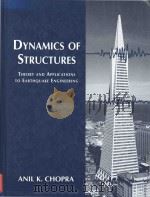
PART ⅠSINGLE-DEGREE-OF-FREEDOM SYSTEMS1
1Equations of Motion,Problem Statement,and Solution Methods3
1.1 Simple Structures3
1.2 Single-Degree-of-Freedom System7
1.3 Force-Displacement Relation8
1.4 Damping Force13
1.5 Equation of Motion:External Force14
1.6 Mass-Spring-Damper System18
1.7 Equation of Motion:Earthquake Excitation20
1.8 Problem Statement and Element Forces23
1.9 Combining Static and Dynamic Responses25
1.10 Methods of Solution of the Differential Equation25
1.11 Study of SDF Systems:Organization29
Appendix 1:Stiffness Coefficients for a Flexural Element30
2Free Vibration35
2.1 Undamped Free Vibration35
2.2 Viscously Damped Free Vibration44
2.3 Energy in Free Vibration52
2.4 Coulomb-Damped Free Vibration53
3Response to Harmonic and Periodic Excitations61
Part A:Viscously Damped Systems:Basic Results62
3.1Harmonic Vibration of Undamped Systems62
3.2 Harmonic Vibration with Viscous Damping68
Part B:Viscously Damped Systems:Applications80
3.3Response to Vibration Generator80
3.4 Natural Frequency and Damping from Harmonic Tests83
3.5 Force Transmission and Vibration Isolation85
3.6 Response to Ground Motion and Vibration Isolation87
3.7 Vibration-Measuring Instruments91
3.8 Energy Dissipated in Viscous Damping94
3.9 Equivalent Viscous Damping98
Part C:Systems with Nonviscous Damping100
3.10Harmonic Vibration with Rate-Independent Damping100
3.11 Harmonic Vibration with Coulomb Friction104
Part D:Response to Periodic Excitation108
3.12Fourier Series Representation109
3.13 Response to Periodic Force109
Appendix 3:Four-Way Logarithmic Graph Paper113
4Response to Arbitrary,Step,and Pulse Excitations119
Part A:Response to Arbitrarily Time-Varying Forces119
4.1Response to Unit Impulse120
4.2 Response to Arbitrary Force121
Part B:Response to Step and Ramp Forces123
4.3Step Force123
4.4 Ramp or Linearly Increasing Force125
4.5 Step Force with Finite Rise Time126
Part C:Response to Pulse Excitations129
4.6Solution Methods129
4.7 Rectangular Pulse Force131
4.8 Half-Cycle Sine Pulse Force137
4.9 Symmetrical Triangular Pulse Force142
4.10 Effects of Pulse Shape and Approximate Analysis for Short Pulses144
4.11 Effects of Viscous Damping147
4.12 Response to Ground Motion149
5Numerical Evaluation of Dynamic Response155
5.1 Time-Stepping Methods155
5.2 Methods Based on Interpolation of Excitation157
5.3 Central Difference Method161
5.4 Newmark’s Method164
5.5 Stability and Computational Error170
5.6 Analysis of Nonlinear Response:Central Difference Method174
5.7 Analysis of Nonlinear Response:Newmark’s Method174
6Earthquake Response of Linear Systems187
6.1 Earthquake Excitation187
6.2 Equation of Motion193
6.3 Response Quantities194
6.4 Response History195
6.5 Response Spectrum Concept197
6.6 Deformation,Pseudo-velocity,and Pseudo-acceleration Response Spectra198
6.7 Peak Structural Response from the Response Spectrum206
6.8 Response Spectrum Characteristics211
6.9 Elastic Design Spectrum217
6.10 Comparison of Design and Response Spectra225
6.11 Distinction between Design and Response Spectra227
6.12 Velocity and Acceleration Response Spectra228
Appendix 6:El Centro,1940 Ground Motion232
7Earthquake Response of Inelastic Systems241
7.1 Force-Deformation Relations242
7.2 Normalized Yield Strength,Yield Reduction Factor,and Ductility Factor248
7.3 Equation of Motion and Controlling Parameters249
7.4 Effects of Yielding250
7.5 Response Spectrum for Yield Deformation and Yield Strength257
7.6 Design Strength and Deformation from the Response Spectrum261
7.7 Design Yield Strength261
7.8 Relative Effects of Yielding and Damping263
7.9 Dissipated Energy264
7.10 Inelastic Design Spectrum269
7.11 Comparison of Design and Response Spectra274
8Generalized Single-Degree-of-Freedom Systems277
8.1 Generalized SDF Systems277
8.2 Rigid-Body Assemblages279
8.3 Systems with Distributed Mass and Elasticity281
8.4 Lumped-Mass System:Shear Building292
8.5 Natural Vibration Frequency by Rayleigh’s Method298
8.6 Selection of Shape Function302
Appendix 8:Inertia Forces for Rigid Bodies306
PART ⅡMULTI-DEGREE-OF-FREEDOM SYSTEMS311
9Equations of Motion,Problem Statement,and Solution Methods313
9.1 Simple System:Two-Story Shear Building313
9.2 General Approach for Linear Systems318
9.3 Static Condensation334
9.4 Planar or Symmetric-Plan Systems:Ground Motion337
9.5 Unsymmetric-Plan Buildings:Ground Motion342
9.6 Symmetric-Plan Buildings:Torsional Excitation350
9.7 Multiple Support Excitation351
9.8 Inelastic Systems355
9.9 Problem Statement356
9.10 Element Forces356
9.11 Methods for Solving the Equations of Motion:Overview357
10Free Vibration365
Part A:Natural Vibration Frequencies and Modes366
10.1Systems without Damping366
10.2 Natural Vibration Frequencies and Modes368
10.3 Modal and Spectral Matrices370
10.4 Orthogonality of Modes371
10.5 Interpretation of Modal Orthogonality372
10.6 Normalization of Modes372
10.7 Modal Expansion of Displacements382
Part B:Free Vibration Response383
10.8Solution of Free Vibration Equations:Undamped Systems383
10.9 Free Vibration of Systems with Damping386
10.10 Solution of Free Vibration Equations:Classically Damped Systems390
Part C:Computation of Vibration Properties392
10.11Solution Methods for the Eigenvalue Problem392
10.12 Rayleigh’s Quotient394
10.13 Inverse Vector Iteration Method394
10.14 Vector Iteration with Shifts:Preferred Procedure399
10.15 Transformation of kφ=ω2mφ to the Standard Form404
11Damping in Structures409
Part A:Experimental Data and Recommended Modal Damping Ratios409
11.1Vibration Properties of Millikan Library Building409
11.2 Estimating Modal Damping Ratios414
Part B:Construction of Damping Matrix416
11.3Damping Matrix416
11.4 Classical Damping Matrix417
11.5 Nonclassical Damping Matrix425
12Dynamic Analysis and Response of Linear Systems429
Part A:Two-Degree-of-Freedom Systems429
12.1Analysis of Two-DOF Systems without Damping429
12.2 Vibration Absorber or Tuned Mass Damper432
Part B:Modal Analysis434
12.3Modal Equations for Undamped Systems434
12.4 Modal Equations for Damped Systems436
12.5 Displacement Response438
12.6 Element Forces438
12.7 Modal Analysis:Summary439
Part C:Modal Response Contributions444
12.8Modal Expansion of Excitation Vector p(t) = sp(t)444
12.9 Modal Analysis for p(t) = sp(t)447
12.10 Modal Contribution Factors448
12.11 Modal Contributions to Response449
Part D:Special Analysis Procedures455
12.12Static Correction Method455
12.13 Mode Acceleration Superposition Method458
12.14 Analysis of Nonclassically Damped Systems459
13Earthquake Analysis of Linear Systems467
Part A:Response History Analysis468
13.1Modal Analysis468
13.2 Multistory Buildings with Symmetric Plan474
13.3 Multistory Buildings with Unsymmetric Plan492
13.4 Torsional Response of Symmetric-Plan Buildings503
13.5 Response Analysis for Multiple Support Excitation508
13.6 Structural Idealization and Earthquake Response513
Part B:Response Spectrum Analysis514
13.7Peak Response from Earthquake Response Spectrum514
13.8 Multistory Buildings with Symmetric Plan519
13.9 Multistory Buildings with Unsymmetric Plan532
14Reduction of Degrees of Freedom549
14.1 Kinematic Constraints550
14.2 Static Condensation551
14.3 Rayleigh-Ritz Method551
14.4 Selection of Ritz Vectors554
14.5 Dynamic Analysis Using Ritz Vectors560
15Numerical Evaluation of Dynamic Response565
15.1 Time-Stepping Methods565
15.2 Analysis of Linear Systems with Nonclassical Damping567
15.3 Analysis of Nonlinear Systems574
16Systems with Distributed Mass and Elasticity585
16.1 Equation of Undamped Motion:Applied Forces586
16.2 Equation of Undamped Motion:Support Excitation587
16.3 Natural Vibration Frequencies and Modes588
16.4 Modal Orthogonality595
16.5 Modal Analysis of Forced Dynamic Response596
16.6 Earthquake Response History Analysis600
16.7 Earthquake Response Spectrum Andlysis604
16.8 Difficulty in Analyzing Practical Systems607
17Introduction to the Finite Element Method613
Part A:Rayleigh-Ritz Method613
17.1Formulation Using Conservation of Energy613
17.2 Formulation Using Virtual Work617
17.3 Disadvantages of Rayleigh-Ritz Method618
Part B:Finite Element Method619
17.4Finite Element Approximation619
17.5 Analysis Procedure621
17.6 Element Degrees of Freedom and Interpolation Functions622
17.7 Element Stiffness Matrix624
17.8 Element Mass Matrix625
17.9 Element(Applied) Force Vector626
17.10 Comparison of Finite Element and Exact Solutions630
17.11 Dynamic Analysis of Structural Continua632
PART ⅢEARTHQUAKE RESPONSE AND DESIGN OF MULTISTORY BUILDINGS639
18 Earthquake Response of Linearly Elastic Buildings641
18.1Systems Analyzed,Design Spectrum,and Response Quantities641
18.2 Influence of T1 and p on Response646
18.3 Modal Contribution Factors647
18.4 Influence of T1 on Higher-Mode Response649
18.5 Influence of p on Higher-Mode Response652
18.6 Heightwise Variation of Higher-Mode Response653
18.7 How Many Modes to Include655
19Earthquake Response of Inelastic Buildings659
19.1 Allowable Ductility and Ductility Demand660
19.2 Buildings with “Weak” or “Soft” First Story665
19.3 Buildings Designed for Code Force Distribution670
19.4 Limited Scope680
20Earthquake Dynamics of Base-Isolated Buildings683
20.1 Isolation Systems683
20.2 Base-Isolated One-Story Buildings686
20.3 Effectiveness of Base Isolation691
20.4 Base-Isolated Multistory Buildings695
20.5 Applications of Base Isolation701
21Structural Dynamics in Building Codes703
Part A:Building Codes and Structural Dynamics704
21.1Uniform Building Code(United States),1994704
21.2 National Building Code of Canada,1995707
21.3 Mexico Federal District Code,1987711
21.4 Structural Dynamics in Building Codes713
Part B:Evaluation of Building Codes720
21.5Base Shear720
21.6 Story Shears and Equivalent Static Forces723
21.7 Overturning Moments726
21.8 Concluding Remarks728
ANotation731
BAnswers to Selected Problems743
Index753
1995《Dynamics of structures : theory and applications to earthquake engineering》由于是年代较久的资料都绝版了,几乎不可能购买到实物。如果大家为了学习确实需要,可向博主求助其电子版PDF文件(由Anil K. Chopra 1995 Prentice Hall 出版的版本) 。对合法合规的求助,我会当即受理并将下载地址发送给你。
高度相关资料
-

- EARTHQUAKE ENGINEERING AND STRUCTURAL DYNAMICS THE JOURNAL OF THE INTERNATIONAL ASSOCIATION FOR EART
- 1979
-
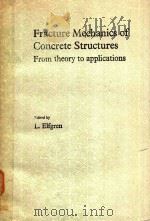
- FRACTURE MECHANICS OF CONCRETE STRUCTURES FROM THEORY TO APPLICATIONS
- 1989 CHAPMAN AND HALL
-
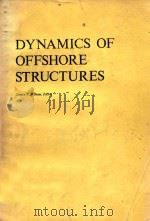
- DYNAMICS OF OFFSHORE STRUCTURES
- 1984 A WILEY-INTERSCIENCE PUBLICATION
-
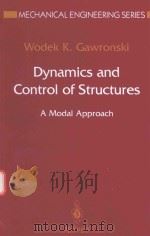
- DYNAMICS AND CONTROL OF STRUCTURES
- 1998 SPRINGER
-
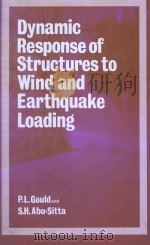
- DYNAMIC RESPONSE OF STRUCTURES TO WIND AND EARTHQUAKE LOADING
- 1980 PENTECH PRESS
-
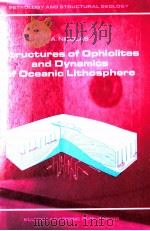
- STRUCTURES OF OPHIOLITES AND DYNAMICS OF OCEANIC LITHOSPHERE
- 1989 KLUWER ACADEMIC PUBLISHERS
-

- APPLICATIONS OF DYNAMICS TO PHYSICS AND CHEMISTRY
- 1888 MACMILLAN AND CO.
-

- PROBABILISTIC STRUCTURAL DYNAMICS ADVANCED THEORY AND APPLICATIONS
- 1995 MCGRAW-HILL,INC
-
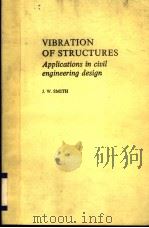
- VIBRATION OF STRUCTURES APPLICATIONS IN CIVIL ENGINEERING DESIGN
- 1988 CHAPMAN AND HALL
-
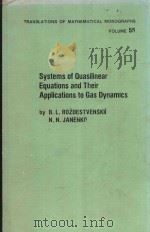
- SYSTEMS OF QUASILINEAR EQUATIONS AND THEIR APPLICATIONS TO GAS DYNAMICS
- 1983 AMERICAN MATHEMATICAL SOCIETY
提示:百度云已更名为百度网盘(百度盘),天翼云盘、微盘下载地址……暂未提供。➥ PDF文字可复制化或转WORD

